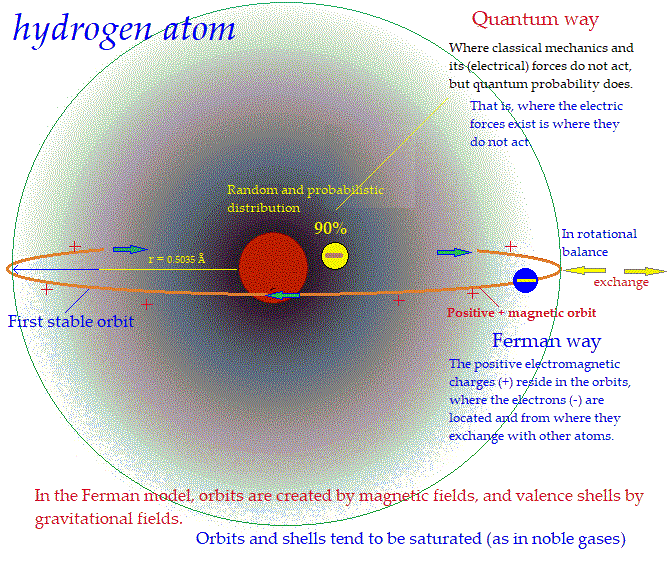The hydrogen atom, often heralded as the most elemental of all elements, serves as a fascinating subject of inquiry within the realms of both physics and chemistry. Characterizing the lifespan of a hydrogen atom requires a foray into the profundities of atomic and subatomic behaviors, as well as an appreciation for the myriad interactions that govern its existence. To comprehend the “lifespan” of this primordial particle, one must approach the topic from various angles, encompassing the nature of atomic stability, reactions that can alter its structure, and the cosmic processes that ultimately interact with its being.
At the core of this discussion lies a fundamental question: What precisely do we mean by the lifespan of a hydrogen atom? Unlike biological organisms, which exhibit finite lifespans defined by physical decay and external factors, atoms, particularly hydrogen, occupy a unique echelon of stability. Hydrogen, consisting of a lone proton and an electron, embodies a quintessential paradigm of atomic structure that has persisted since the very inception of the universe during the Big Bang. Hence, to suggest that hydrogen atoms possess a lifespan might misrepresent their nature. Rather, the focus should shift toward their existential continuity and transformation through various processes.
To begin, let us explore the intrinsic stability of a hydrogen atom. The hydrogen atom is an operative allegory for resilience in the atomic realm. With its singular proton and electron in constant orbit, this simplicity renders it remarkably stable. The electromagnetic forces between the proton and electron result in a binding energy that is sufficient to fend off ordinary perturbations. Under typical conditions encountered on Earth, hydrogen atoms can exist indefinitely, giving rise to the saying that they are “immortal” in the absence of external forces.
However, the concept of atomic longevity is challenged by environmental factors that can catalyze nuclear reactions. For instance, when hydrogen atoms undergo fusion, as observed in the cores of stars, they are transformed into helium and energy in a remarkable process that fuels stellar life cycles. The elapsed time a hydrogen atom spends in a star before being converted through fusion to heavier elements could be described as a cosmic lifetime, where individual atoms participate in a greater narrative of stellar evolution. As such, during its tenure within a star, the hydrogen atom may exist for millions to billions of years, but eventually succumbs to the transformative forces of nuclear fusion.
In addition to stellar fusion, one must consider other chemical processes that can lead hydrogen to new existential states. The formation of water, acids, and organic compounds is a testament to hydrogen’s versatility and proclivity for forming bonds with other elements. When hydrogen engages in chemical reactions, it transcends mere existence as an isolated atom, thus extending its influence and legacy in a multitude of molecular structures. These interactions, while transient, highlight the interconnectedness of all atoms and molecules, where a single hydrogen can animate diverse chemical canvases.
Moreover, the concept of isotopy unveils further dimensions to the lifespan of hydrogen. Isotopes—variants of elements with differing neutron counts—expand the narrative of hydrogen. Most commonly, hydrogen exists as protium, with one proton and no neutrons. However, its isotopes, deuterium and tritium, alter its identity. Tritium, for instance, is radioactive with a half-life of about 12.3 years, marking a stark contrast to its stable counterparts. In this sense, while most hydrogen atoms can languish in perpetual existence, isotopic counterparts advocate for diversity in lifespans, with tritium continuously undergoing radioactive decay until it ultimately ceases to exist as a hydrogen atom.
Additionally, the atomic interactions of hydrogen in cosmic environments imbue it with a transient quality. As hydrogen atoms drift through the vast expanse of space, they may be subjected to extreme conditions, such as high-energy collisions resulting from stellar explosions (supernovae). These events can eject hydrogen into a myriad of states, leading to the production of exotic entities such as ionized hydrogen, which exist fleetingly in plasma states. In juxtaposing these ephemeral interactions against the backdrop of hydrogen’s inherent stability, we can appreciate the dynamic nature of the atomic universe where life, death, and rebirth are interwoven.
Astrophysical phenomena also play a monumental role in the lifecycle of hydrogen. Stellar formation—where gas clouds collapse under gravity to spark new stars—illustrates how hydrogen consistently reinvents itself. It is the alchemical essence from which new celestial bodies emerge, thus perpetually advancing its narrative. In this sense, the lifespan of a hydrogen atom is a continuum, inherently linked to the cosmic cycle, transcending linear time.
The exploration of the lifespan of hydrogen culminates in the recognition of its dual nature as both eternal and transient. While individual atoms can exist in a stable state indefinitely, they are nonetheless subjected to a plethora of interactions that may metamorphose their identity or context. From cosmic epochs that cradle their beginnings to chemical pathways that illustrate their versatility, hydrogen weaves a rich tapestry of existence. To perceive a hydrogen atom merely as a static entity would be to overlook the profound complexities inherent within its nature, echoing a deeper philosophical inquiry into the essence of matter itself.
In conclusion, understanding the lifespan of a hydrogen atom necessitates the recognition of both its permanence and its propensity for transformation. As the foundational building block of matter, hydrogen atomically assembles and disassembles through a myriad of processes, unveiling the poetry of existence within the atomic theater. Thus, the next time one encounters the hydrogen atom, it may serve as a reminder of the boundless possibilities contained within the subatomic world—an elegant metaphor for resilience amid constant flux.












